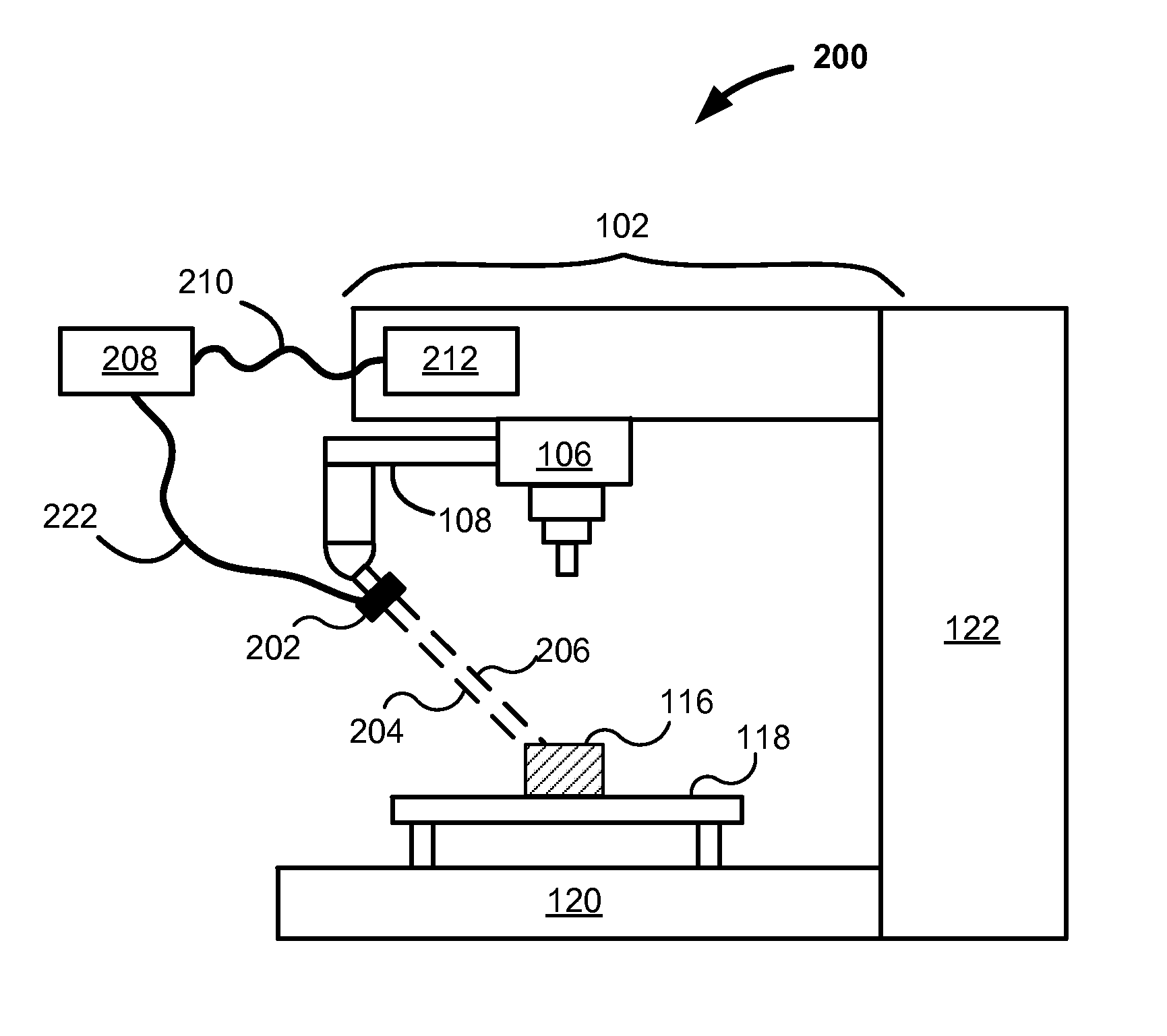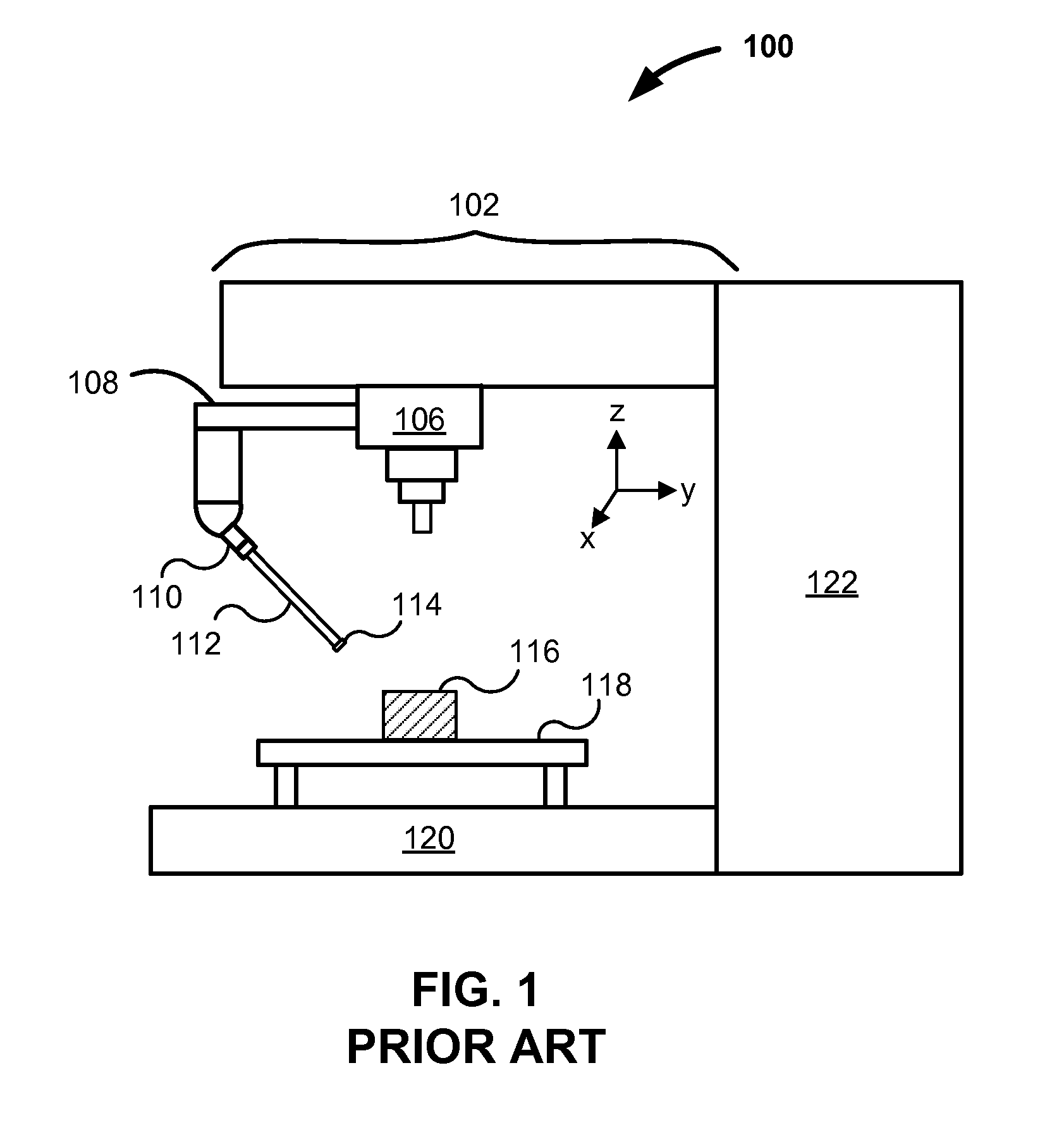High speed metrology with numerically controlled machines
a numerical control machine and high-speed technology, applied in the field of synchronizing, logging and post-processing metrology instrument readings, can solve the problems of difficult to produce cnc machine tools that are capable of high, inability to ensure the accuracy of workpieces, and inability to accurately match workpieces, etc., to achieve high-quality workpiece verification, ensure production tolerances, and improve the effect of accuracy
- Summary
- Abstract
- Description
- Claims
- Application Information
AI Technical Summary
Benefits of technology
Problems solved by technology
Method used
Image
Examples
Embodiment Construction
[0034]Overview. Precision production equipment and measure machines have been used for many years to make two-dimensional and three-dimensional workpieces from solid blanks or blocks of a starting material. Material is removed little by little until the final workpiece remains. Milling machines come in a variety of sizes. Milling machines can move a spindle, arm or tool relative to the workpiece, or can move the workpiece relative to the spindle, arm or tool. Often, the milling tool is a rotating milling cutter, which cuts on the tool's sides and tip. While some milling machines are manually operated, most modernized milling machines are computer controlled. Such control is often referred to as computer numerically controlled (CNC). While a CNC machine may be referenced herein, such referenced machine is not limited to just milling machines, but refers generally to all precision production equipment.
[0035]A workpiece is often created from a model or digital design. An operator, prog...
PUM
 Login to View More
Login to View More Abstract
Description
Claims
Application Information
 Login to View More
Login to View More - R&D
- Intellectual Property
- Life Sciences
- Materials
- Tech Scout
- Unparalleled Data Quality
- Higher Quality Content
- 60% Fewer Hallucinations
Browse by: Latest US Patents, China's latest patents, Technical Efficacy Thesaurus, Application Domain, Technology Topic, Popular Technical Reports.
© 2025 PatSnap. All rights reserved.Legal|Privacy policy|Modern Slavery Act Transparency Statement|Sitemap|About US| Contact US: help@patsnap.com



